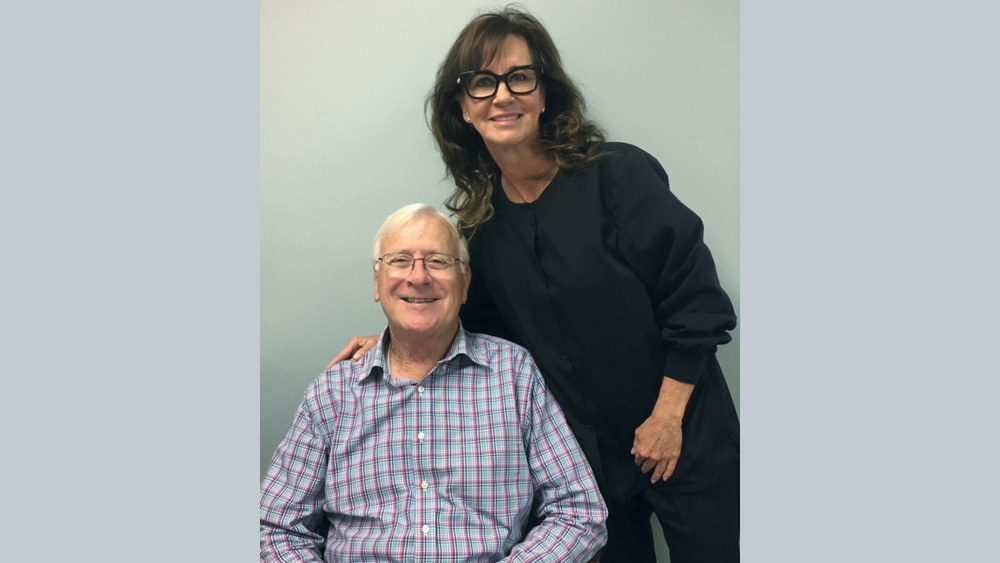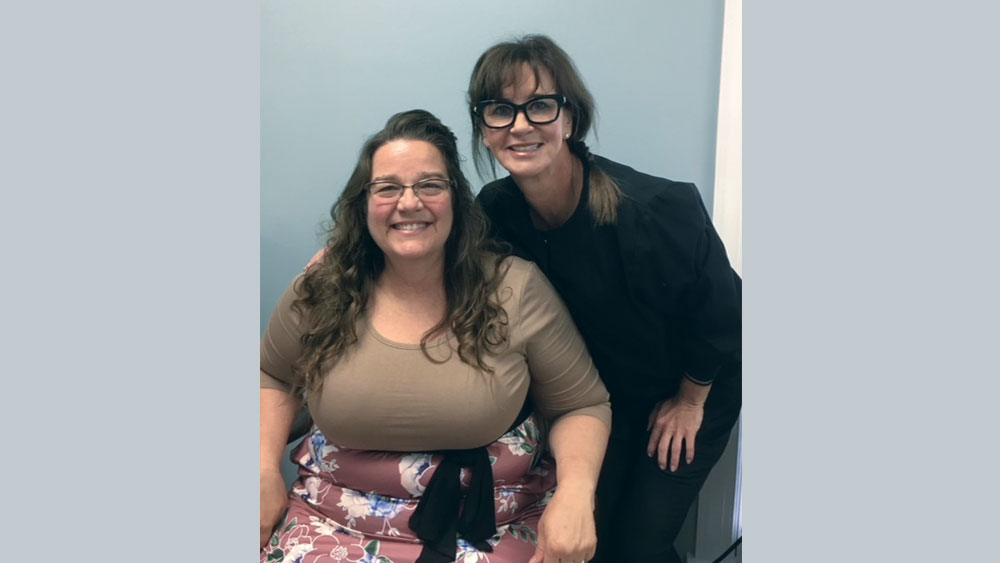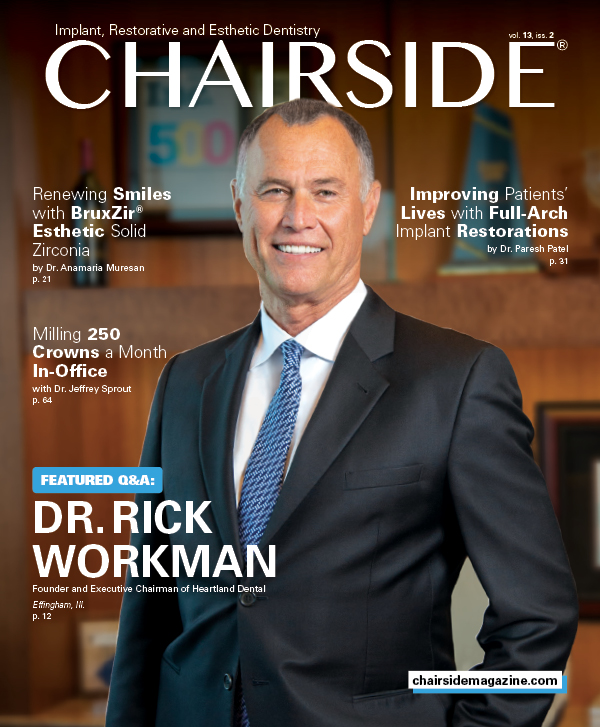Sleep Dentistry: Improving the Quality of Life

As clinicians, we already know how rewarding it is to restore patients’ teeth and provide them with a confident smile. As the field of dentistry expands to include ever-broadening options for the promotion of overall health, our ability to help our patients also increases beyond the traditional scope of general dentistry. Incorporating sleep dentistry into your practice has the potential to improve the quality of patients’ lives in very meaningful ways.
As dentists, due to our ability to observe the patient’s airway during a routine visit, we are in a unique position to screen for and treat sleep-disordered breathing issues, particularly snoring and obstructive sleep apnea (OSA). I believe that recognizing the signs of snoring and OSA is a crucial responsibility of our profession. Many dentists place nightguards because they observe signs of clenching and grinding, but they do not think to check whether the patient has a small airway, a large tongue or an elongated uvula. In such cases, placing a nightguard can actually be harmful to the patient’s health, as the appliance may cause an obstruction in the already-reduced airway.

When a spouse is treated for snoring or OSA, it can have a positive effect on the marriage.
Obstructive sleep apnea, when left untreated, can contribute to significant health issues, including high blood pressure, chronic heart failure, atrial fibrillation, stroke and other cardiovascular problems.1 OSA is associated with Type 2 diabetes and depression, and can be a factor in traffic or heavy machinery accidents, as many OSA sufferers experience persistent drowsiness prior to diagnosis and treatment.1 Snoring can indicate the potential for OSA or be a sign of airway obstruction.2 A self-reported lower quality of life is common with OSA,3 and sleep-disordered breathing can affect people in ways they don’t even realize. OSA and snoring may also adversely affect relationships, thus impacting the patient’s loved ones.4 When sleep-related issues are treated, it can be life-changing. Marriages can be saved because couples are able to sleep in the same bed again without one being “booted to the couch” for keeping the other up all night. Careers can be improved because patients are no longer drowsy and lagging all day. The biggest reward to most patients, however, is the peace of mind that comes with knowing that, in addition to enhancing their own personal welfare, their family’s lives are improved, too, because they can live life to the fullest with those they care about.

Persistent sleepiness or lack of energy at work could be a sign of OSA. Dentists can screen patients for sleep-disordered breathing to identify and treat the problem.
As sleep dentistry becomes a larger part of the care clinicians provide to their patients, these kinds of rewards are passed on to us, the doctors, who help bring about these positive changes in the lives of our patients. It’s a responsibility but also a true privilege for dentists committed to the overall well-being of those they treat.
CASE 1
A 69-year-old male was referred by a local general dentist for an evaluation consultation for an oral sleep appliance. A sleep study had been conducted by the patient’s physician, and the patient had been diagnosed with mild sleep apnea.
I used to wake up at night gasping for air and snoring. I would be exhausted during the day because I would continuously wake up at night. Now that I have my appliance, I sleep better and longer, and no longer feel sleepy throughout the day. My wife is impressed with how my appliance has helped our day-to-day lives. We are now able to travel all over, and family can now come and stay because no one is bothered by my snoring! I have so much more energy and no longer have to worry about falling asleep any- and everywhere.
– Tom P.

CLINICAL OBSERVATIONS
- Class II malocclusion
- Signs of sleep bruxism
- Soft, elongated palate
- Mallampati grade: Class IV airway
- Large tongue
- Neck size: 16 inches
Rx: Delivered a dreamTAP™ appliance on March 14, 2016
CASE 2
A 54-year-old female patient presented for a sleep consultation in 2017. She was diagnosed with sleep apnea 10 years ago, but a more recent study had been performed, at which she tested negative for sleep apnea.
I used to wake up in the mornings with headaches and feeling drained throughout the day. Now I can finally sleep. I wake up feeling refreshed and energetic. My family no longer complains of my snoring and moodiness and my hubby is happy! I have been a teacher for years and finally can keep up with my students. My appliance has truly saved my life!
– Rebecca A.

Rebecca A. with Dr. Haley
CLINICAL OBSERVATIONS
- Class II malocclusion
- Tonsils present
- Elongated palate
- Mallampati grade: Class III airway
- Mandibular torus
- Long uvula
- Abfractions present
- Signs of grinding and clenching
- Epworth Sleepiness Scale: 17
- Wakes up with headache
Rx: Delivered an EMA® appliance for the treatment of snoring on Dec. 20, 2017
CONCLUSION
Oral appliances have been shown to be an effective treatment for snoring and OSA. Several randomized controlled trials have reported improvements in blood pressure, sleepiness and quality of life.3 It’s been my experience that long-term benefits are significant for patients treated with an oral sleep appliance. Thus, broadening the practice to care for patients in a holistic manner can provide an important and rewarding opportunity for our profession.
dreamTAP is a trademark of Airway Management Inc. EMA is a registered trademark of Frantz Design, Inc.
References
- ^Sleep apnea information for clinicians [internet]. Washington, D.C.: American Sleep Apnea Association; c2017 [cited 2018 July 5]. Available from: https://www.sleepapnea.org/learn/sleep-apnea-information-clinicians.
- ^Haley S. Dental sleep medicine: recognizing and screening for obstructive sleep apnea in the dental practice. Chairside. 2017;12(2):53-60.
- ^Phillips CL, Grunstein RR, Darendeliler MA, Mihailidou AS, Srinivasan VK, Yee BJ, Marks GB, Cistulli PA. Health outcomes of continuous positive airway pressure versus oral appliance treatment for obstructive sleep apnea: a randomized controlled trial. Am J Respir Crit Care Med. 2013 Apr 15;187(8):879-87.
- ^Troxel WM, Buysse DJ, Hall M, Matthews KA. Marital happiness and sleep disturbances in a multi-ethnic sample of middle-aged women. Behav Sleep Med. 2009;7(1):2-19.


